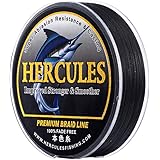A recent multi-day fishing adventure on South Carolina’s stunning Lake Jocassee revealed both the challenges and rewards of angling in the region. Starting as early as 3:30 AM, anglers often embark on these expeditions with specific targets, yet the dynamic environment of mountain reservoirs frequently dictates unexpected shifts in strategy. The pursuit of trout and various bass species in the Mountains of South Carolina, particularly within Lake Jocassee, often involves a blend of deep-water trolling and adaptive shallow-water techniques. This commitment underscores the passion for Lake Jocassee fishing.
The pristine waters of Lake Jocassee, nestled in the South Carolina Mountains, are known for their deep, clear characteristics. During one such excursion, the vessel was positioned in approximately 200 feet of water, indicating the profound depths that are characteristic of this remarkable reservoir. The initial strategy for targeting trout and spotted bass involved extensive trolling near the dam, a tactic often employed for deep-dwelling species. Down riggers, essential pieces of fishing gear, were deployed on both sides of the boat. Planer boards were also utilized, designed to spread lines wider and cover a larger area. The choice of bait in these waters is crucial, and herring is widely recognized as the dominant food source for many fish in this reservoir. Consequently, spoons were tipped with Pautzke Fire Gel, specifically the herring flavor, a secret sauce for attracting the wary trout and mountain bass.
Adapting to Lake Jocassee’s Dynamic Conditions for Mountain Bass and Trout
Despite meticulous planning and an early start, external factors such as weather conditions significantly influence fishing outcomes. This was demonstrated when strong winds created choppy conditions on the main body of Lake Jocassee, making open-water trolling at 1.5 miles per hour particularly challenging in a flat-bottom boat. Such situations necessitate a rapid shift in strategy. Instead of persisting in the white-capping open water, a move was made into the calmer, glass-like conditions of a nearby creek. This adjustment is a common practice for experienced anglers, illustrating the importance of adaptability in trout fishing South Carolina.
The switch from deep-water trolling to shallow-water casting brought about immediate results. A white jerkbait with blue accents, specifically chosen to imitate herring, was cast near a rock ledge. This alternative technique quickly led to a hookup, showcasing the versatility required for successful mountain bass fishing. The first catch proved to be a smallmouth bass, an uncommon find in Lake Jocassee. This unexpected catch was celebrated, marking a personal first for the angler in these particular waters. Following this, several other bass were caught, including a largemouth bass estimated to be around a pound and a quarter. It was observed that this largemouth was being followed by approximately five other bass, suggesting a productive fishing spot.
Identifying Bass Species and Understanding Reservoir Ecology
Distinguishing between bass species is an important skill for anglers, particularly when conservation efforts are in play. A key identifier for spotted bass, which are often encouraged to be kept, is the presence of a rough patch on their tongue, along with a slightly darker line along their side and back. In contrast, largemouth bass lack this rough patch and typically display a greener hue. Smallmouth bass, as noted in the fishing trip, are a rarer catch in Lake Jocassee, adding to the excitement when one is reeled in.
The ecological balance of reservoirs like Lake Jocassee is greatly affected by species population dynamics. Spotted bass, known for their aggressive nature and prolific breeding, have been observed to take over these reservoirs. This phenomenon often leads to a decline in the populations of largemouth and smallmouth bass, which are considered more prized catches by many anglers. Consequently, local wildlife authorities often encourage the retention of spotted bass to help manage their numbers and support the recovery of the native largemouth and smallmouth bass populations, a crucial aspect of responsible Lake Jocassee fishing.
Persistence and Technology in Deep Water Fishing
After the wind subsided, another attempt at deep-water trolling was made on Lake Jocassee. This phase highlights the role of modern technology in fishing, with fish being clearly visible on the depth finder. At depths of 75 to 80 feet, fish were observed streaking towards the lines, yet they were not committing to the bait. This can be a source of frustration for even the most seasoned anglers, despite the use of effective techniques like downriggers and proven baits. The meticulous process of setting lines, often letting out around 20 feet of line before clipping to the downrigger, demonstrates the precision involved in this style of fishing.
The entire three-day expedition, from the early morning starts to the strategic shifts between open water and sheltered creeks, underscores the unpredictable yet thrilling nature of fishing for mountain bass and trout in the South Carolina Mountains. The experience gathered, from identifying subtle differences between bass species to understanding the ecological pressures within the reservoir, enhances the angler’s overall knowledge and appreciation for the pursuit. Responsible angling practices, including adherence to catch limits and understanding species management, are essential for preserving the unique fishing opportunities found in places like Lake Jocassee.








